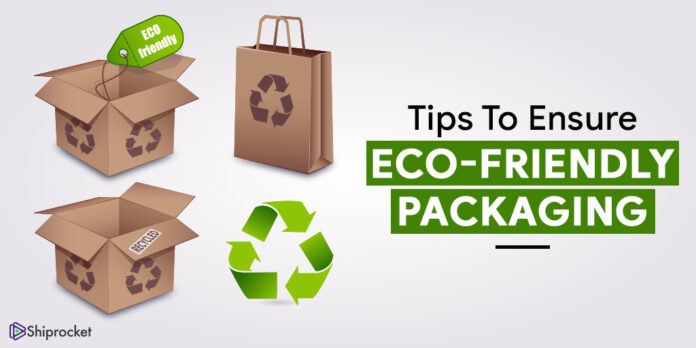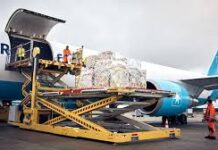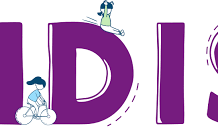Eco-friendly packaging is gaining traction from businesses and consumers. It can allow people to show their creativity and environmental consciousness.
Requiring fewer materials, eco-friendly packaging provides advantages beyond companies and brands. So, this article will explore the reasons why eco-friendly packaging benefits everyone.
1. Environmental Conservation
The environmental benefits of eco-friendly packaging are among its greatest advantages.
Reduced Resource Consumption
Recycled or renewable materials are frequently used in eco-friendly packaging, which lowers the need for virgin resources like oil and trees.
Minimized Waste Generation
Eco-friendly packaging is made to be recyclable, biodegradable, or compostable. This lessens the quantity of waste that ends up in landfills and marine environments.
Decreased Carbon Footprint
When compared to standard packaging materials, the production and transportation of eco-friendly packaging would usually result in lower greenhouse gas emissions, which can help slow down global warming.
Everyone, be it businesses or the people, can support environmental conservation efforts and save ecosystems and natural resources by selecting eco-friendly packaging options.
2. Consumer Preference
When making purchases, consumers would prioritize sustainability. This is a growing demand for eco-friendly goods and packaging. As consumers shop eco friendly packaging, companies can attract and keep them, especially those that value sustainability and responsible consumption practices.
Here are some packaging ways you can explore when shifting towards eco-friendly packaging:
Canvas Tote Bags
Tote bags are a great environmentally friendly alternative if you intend to permanently eliminate plastic bags from your place of business. Hessian bags can be used in place of regular plastic bags. It is a woven fabric composed of vegetable fibers and the skin of the jute plant. Hessian bags are strong and long-lasting; they work well for holding large objects.
Eco-Box Packaging
By using cardboard boxes for all of your packaging needs, you would be making a significant effort to reduce waste. Also, ensure to utilize only 100% recyclable materials while making the boxes.
Eco-Friendly Labels
A package is not complete without an appealing label. But keep in mind that even a little product label might contribute to waste. Anywhere you put it, be it on cartons, bags, or bottles, your product label or seal needs to be recyclable, compostable, or biodegradable.
Eco-Pouch Packaging
Maybe you own a coffee business and you package your locally sourced coffee beans in plastic bags. Eco-pouches are a good substitute if you’re searching for something greener. Made from sustainable wood pulp starch, this eco-pouch is straightforward and customizable. Additionally, in just 85 days, it can become a compostable material.
3. Cost Savings
Eco-friendly packaging may seem more expensive but it can often result in cost savings in the long run. Also, eco-friendly packaging lowers waste and the need for fresh raw materials, which lowers production and disposal costs for enterprises.
Consumers may benefit from these cost savings in the form of lower prices or through loyalty programs that encourage eco-friendly shopping habits.
4. More Storage
Shifting to eco-friendly packaging makes extra space for transport, allowing you to ship more products while cutting transport costs. A smaller footprint means less storage space needed, providing opportunities for expansion or new projects. Additionally, it frees up shelf space for creative displays.
5. Regulatory Compliance
Globally, governments and regulatory agencies are enforcing stricter regulations and rules about packaging waste and environmental sustainability:
Bans on Single-Use Plastics
The use of single-use plastics has been restricted or banned in several countries and localities, which has forced companies to look for more environmentally friendly packaging options.
Environmental Certifications
Eco-friendly packaging materials guarantee compliance with legal requirements as well as industry best practices by frequently meeting or beyond established environmental standards and certifications.
6. Innovation and Creativity
The transition towards eco-friendly packaging has prompted innovation and creativity within the public and the packaging industry. Everyone may help solve sustainability issues and promote a creative and innovative culture by using eco-friendly packaging.
Sustainable Materials
To minimize their negative effects on the environment, manufacturers are creating new materials and technologies that have the durability and usefulness of conventional packing materials.
Utility
Well-designed packaging serves a specific purpose. In addition to protecting your product, useful packaging facilitates shipping, picking up, and storing. Additionally, your packaging can gain the same value as your product if it serves a purpose that the consumer finds useful.
Design Versatility
Businesses may create unique and engaging package experiences for customers by utilizing eco-friendly packaging, which offers more design flexibility and customization.
There are numerous recyclable and biodegradable substitute packaging options available. The most common kinds of packaging that break down naturally are listed below:
Paper
Because it is biodegradable, recyclable, reusable, and versatile, it is a great option for packaging. The majority of paper packaging that is used daily is composed of recycled paper.
Cardboard
Cardboard is another good solution for packaging because of its strong structure. Non-laminate cardboard breaks down rapidly.
Cornstarch
Plant starch or cornstarch can be used to make packing “peanuts,” which are protective packaging used to hold fragile objects in place. You can use this kind of packing instead of plastic bubble wrap. Packing peanuts manufactured from starch is biodegradable.
Bagasse Paper
The juice that is collected from sugarcane fiber pulp is used to make this packing material. In food services, bagasse paper frequently takes the role of traditional paper packaging.
Additionally, some packaging materials are recyclable. But even if they do not harm the environment, getting the raw materials needed to make these products still uses a lot of energy.
These recyclable packaging materials are:
Some plastics
PET bottles, milk jugs, shampoo bottles, ice cream tubs, takeout containers, plastic cutlery, and plastic bags are a few examples of recyclable plastics.
Some metals
Metals are recyclable multiple times. It is possible to recycle steel cans used to hold food and beverages.
Shift Towards Eco-Friendly Packaging Now!
Environmentally friendly packaging has several advantages for customers, businesses, and the environment. The benefits of eco-friendly packaging are simple and include economic savings, regulatory compliance, consumer preference, environmental conservation, and innovation.
Businesses and the public may lessen their environmental impact, improve their brand’s reputation, draw in environmentally conscious customers, and promote long-term profitability by putting sustainability first and utilizing eco-friendly packaging solutions.
Write and Win: Participate in Creative writing Contest & International Essay Contest and win fabulous prizes.

















